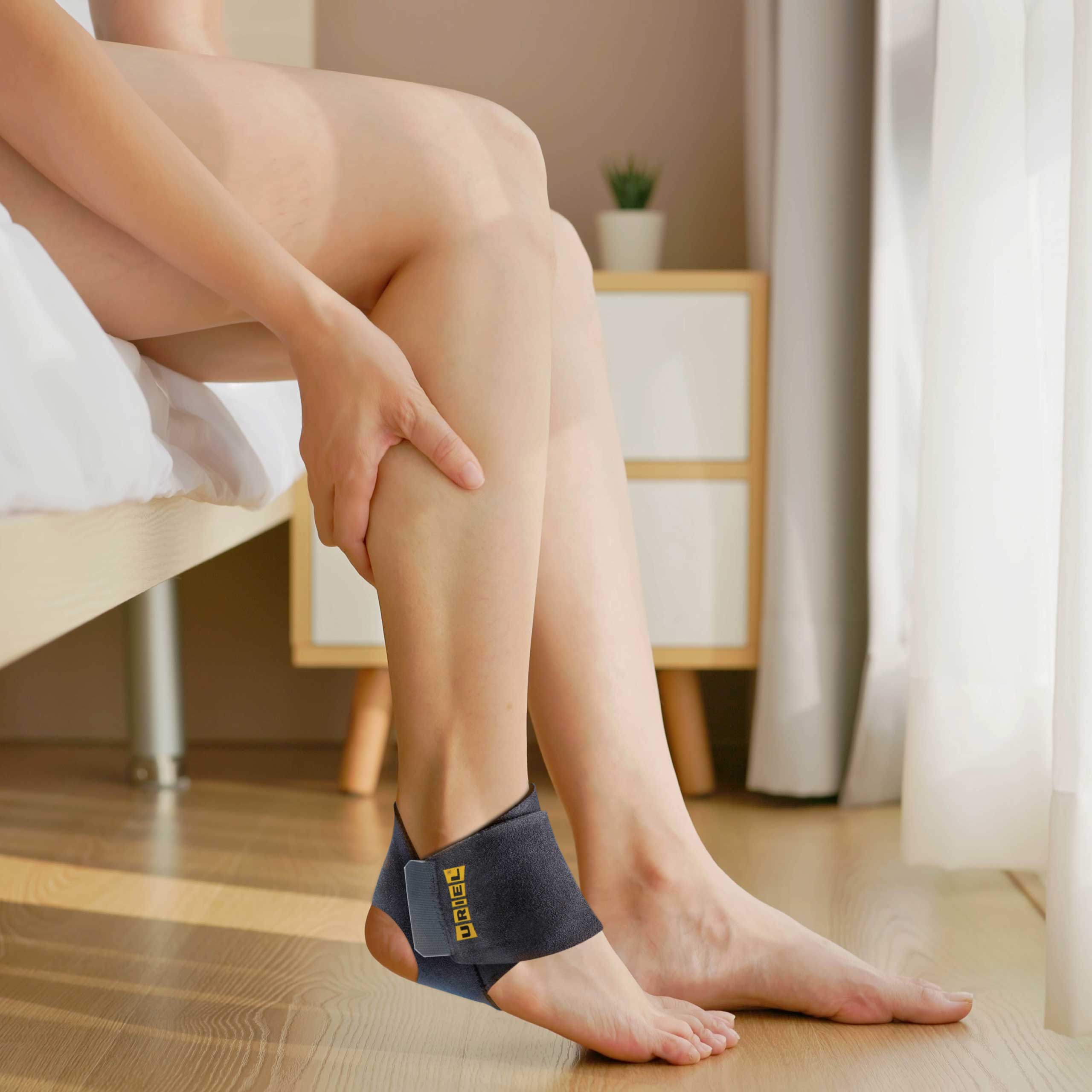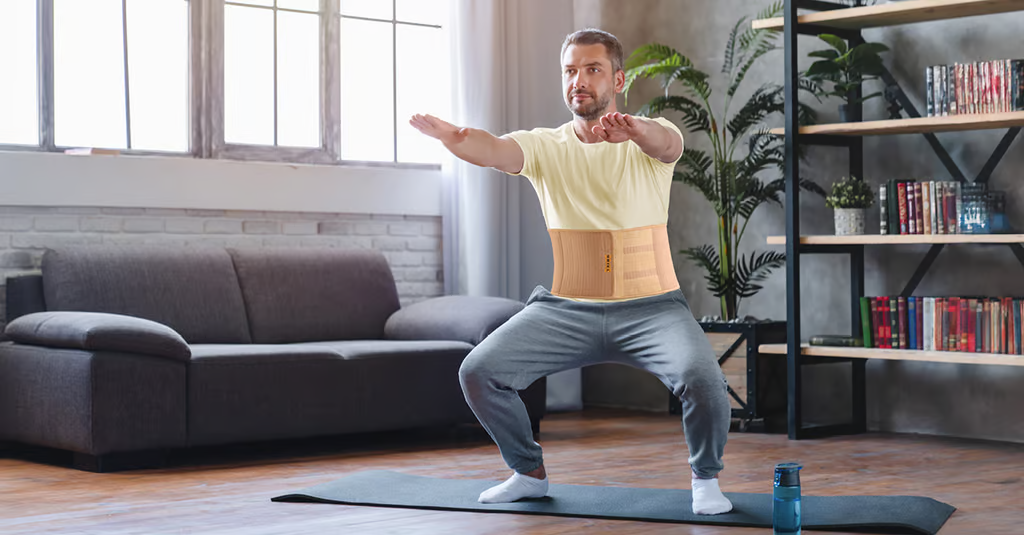

Ankle protector | ST37
Ankle protector to reduce swelling and pain
An advanced ankle brace that provides support and protection for the ankle in cases of pain or swelling. The brace is made of elastic material that allows for a perfect fit to the ankle structure and prolonged use with maximum comfort. It helps maintain ankle stability during daily or sports activities and reduces strain on the affected area.
Suitable for right or left foot.
Medical indications:
- Ankle Sprains – for support and pain reduction during recovery
- Ankle swelling and inflammation (Edema/Inflammation) – for relief and improved stability
- Ankle Ligament Injuries – to prevent excessive movements and maintain stability
- Rehabilitation after ankle injuries or surgeries – to protect and support the injured area
- Preventing sports injuries – to maintain ankle stability during physical activity
- Chronic ankle pain – due to wear and tear or overload
- Support in cases of muscle weakness – in the ankle and foot area

Dimensions

Extended description
User manual
- Before purchasing, measure your ankle circumference and select the appropriate size according to the attached size chart.
- Make sure the ankle and the skin in the area are clean and dry.
- Slide the protector over your ankle and gently tighten the straps to achieve stability without feeling excessive pressure.
- Use the protector during daily or sporting activities.
- Wash the protector by hand with lukewarm water and mild soap only.
- Air dry it in a shady place before reusing.
- Avoid using a washing machine or dryer.
Our expert advice
- Strenuous physical activity should be avoided during the first few days after the injury to allow the damaged tissues to begin the healing process.
- If there is no fracture and in accordance with the instructions of the treating physician, it is recommended to step on the foot as soon as possible. Studies have shown that rehabilitation is faster the sooner you step on it.
- Elevate your leg above heart level whenever possible to reduce swelling. It is also recommended to combine this action with an elastic bandage around the ankle, and gentle movements of the ankle to 'squeeze' the fluids towards the body.
- During the first few days, it is recommended to place ice wrapped in a towel on the injured ankle for 15-20 minutes every two to three hours. Avoid placing the ice directly on the skin to prevent frostbite.
- Start with exercises to strengthen the ankle and improve range of motion, especially dorsiflexion.
- Next, incorporate exercises to improve balance, such as standing on one leg or using a balance cushion.
- After rehabilitation, incorporate exercises to strengthen the muscles around your ankle and improve balance as part of your exercise routine.
- Consider using an ankle brace during intense sports activities to prevent re-injury.
- Note: It is recommended that all of these instructions be followed as recommended by a professional, and that you avoid activities that increase pain or discomfort.

- Before purchasing, measure your ankle circumference and select the appropriate size according to the attached size chart.
- Make sure the ankle and the skin in the area are clean and dry.
- Slide the protector over your ankle and gently tighten the straps to achieve stability without feeling excessive pressure.
- Use the protector during daily or sporting activities.
- Wash the protector by hand with lukewarm water and mild soap only.
- Air dry it in a shady place before reusing.
- Avoid using a washing machine or dryer.
- Strenuous physical activity should be avoided during the first few days after the injury to allow the damaged tissues to begin the healing process.
- If there is no fracture and in accordance with the instructions of the treating physician, it is recommended to step on the foot as soon as possible. Studies have shown that rehabilitation is faster the sooner you step on it.
- Elevate your leg above heart level whenever possible to reduce swelling. It is also recommended to combine this action with an elastic bandage around the ankle, and gentle movements of the ankle to 'squeeze' the fluids towards the body.
- During the first few days, it is recommended to place ice wrapped in a towel on the injured ankle for 15-20 minutes every two to three hours. Avoid placing the ice directly on the skin to prevent frostbite.
- Start with exercises to strengthen the ankle and improve range of motion, especially dorsiflexion.
- Next, incorporate exercises to improve balance, such as standing on one leg or using a balance cushion.
- After rehabilitation, incorporate exercises to strengthen the muscles around your ankle and improve balance as part of your exercise routine.
- Consider using an ankle brace during intense sports activities to prevent re-injury.
- Note: It is recommended that all of these instructions be followed as recommended by a professional, and that you avoid activities that increase pain or discomfort.
Blog

Treating Lower Back Pain: 6 Tips to Improve Quality of Life
Suffering from lower back pain? You are definitely not alone. There are many ways to deal with one of the most common pains in the world, here are some of them. It's time to relieve the pain.

The Secret to a Healthy Back: The Complete Guide to Improving Posture and Alleviating Back Pain
Is back health important to you? Get the 'Secret of a Healthy Back' guide containing information, tips and useful advice for relieving back pain. By Oriya Moran, Chief Physiotherapist Download t...

Kinesio tape or professional elastic bandage?
Suffering from sports injuries, bruises or simply pain caused by medical problems? Get to know the variety of dressing products that will support you. When should we use kinesiology tape and why d...
